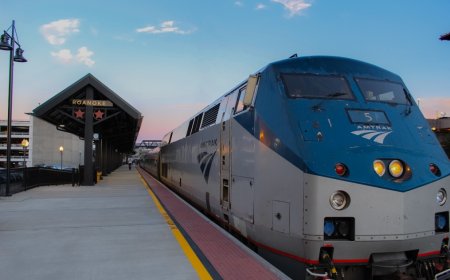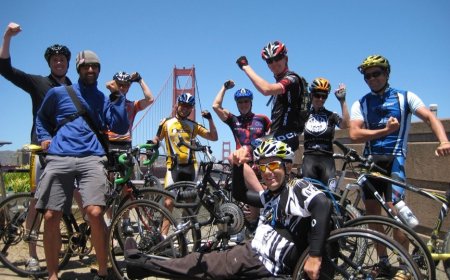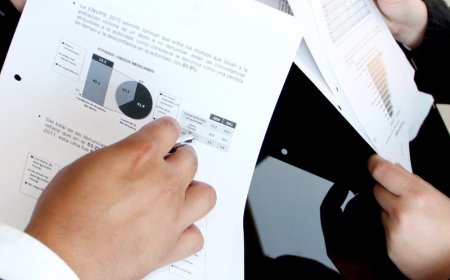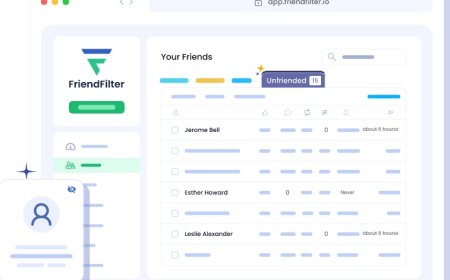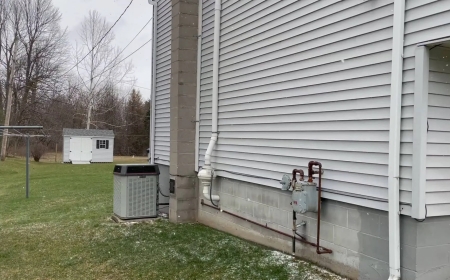How To Drive Turtle Creek Blvd Dallas Mansions
How to Drive Turtle Creek Blvd Dallas Mansions Turtle Creek Boulevard in Dallas, Texas, is more than just a road—it’s a corridor of prestige, architectural grandeur, and quiet luxury. Lined with sprawling estates, meticulously landscaped grounds, and historic mansions, this stretch of road represents the epitome of Dallas high society. Yet, for many—visitors, new residents, or even seasoned locals
How to Drive Turtle Creek Blvd Dallas Mansions
Turtle Creek Boulevard in Dallas, Texas, is more than just a road—it’s a corridor of prestige, architectural grandeur, and quiet luxury. Lined with sprawling estates, meticulously landscaped grounds, and historic mansions, this stretch of road represents the epitome of Dallas high society. Yet, for many—visitors, new residents, or even seasoned locals—navigating Turtle Creek Blvd with confidence and respect requires more than just turning the key in the ignition. Driving through this iconic neighborhood isn’t about speed or efficiency; it’s about awareness, etiquette, and understanding the cultural and spatial context of one of Dallas’s most exclusive enclaves.
This guide is designed to help you master the art of driving along Turtle Creek Boulevard with poise, safety, and discretion. Whether you’re attending a private event, delivering a package to a high-end residence, or simply admiring the architecture from behind the wheel, this tutorial will equip you with the knowledge to navigate this neighborhood like a local—without drawing unwanted attention or violating the unspoken rules of the road.
Unlike typical urban driving guides, this tutorial focuses on the nuanced intersection of traffic flow, residential privacy, architectural preservation, and neighborhood culture. It’s not about how to get from point A to point B—it’s about how to move through a space that values silence, discretion, and elegance above all else.
Step-by-Step Guide
1. Understand the Geography and Layout
Turtle Creek Boulevard runs approximately 1.5 miles from the intersection of Live Oak Street in the west to the junction with Harry Hines Boulevard in the east. It curves gently along the natural topography of Turtle Creek, offering elevated views of the waterway and dense tree cover that shields the properties from the street. The road is predominantly two lanes—one in each direction—with no center turn lane, and parking is extremely limited, often restricted to resident-only zones.
Key intersections to memorize:
- Live Oak Street (western terminus)
- Harwood Street (mid-block, near the Dallas Arboretum entrance)
- Cherry Street (eastern segment, near the Dallas Country Club)
- Harry Hines Boulevard (eastern terminus)
Most mansions are set back 50 to 150 feet from the curb, behind wrought iron gates, hedges, or stone walls. Many properties have private driveways that angle sharply inward, making U-turns or sudden stops dangerous and disrespectful. Always assume that any driveway you see is active—even if no vehicle is visible.
2. Plan Your Route Before You Leave
Google Maps or Waze may direct you through Turtle Creek Blvd as a shortcut—but they do not account for neighborhood norms. Before you drive, use satellite view to identify the exact address you’re targeting. Note whether your destination is on the north or south side of the boulevard, and plan your entry and exit accordingly.
Pro tip: Avoid cutting through side streets like Inwood Road or Swiss Avenue to “get closer.” These are residential streets with strict no-through-traffic policies. Residents monitor these routes closely, and unauthorized vehicles are often reported.
If you’re unfamiliar with the area, enter Turtle Creek Blvd from Live Oak Street. This is the most controlled and least congested access point. Avoid approaching from Harry Hines during rush hour (7–9 a.m. and 4–6 p.m.), as traffic backing up from the highway can spill into the neighborhood and disrupt the quiet rhythm of the street.
3. Adjust Your Driving Behavior
Speed limits on Turtle Creek Blvd are posted at 30 mph, but the legal limit is not the standard. The unspoken rule is 20–25 mph. Driving faster than this is perceived as inconsiderate, even reckless. The road is narrow, tree-lined, and often shaded—pedestrians, cyclists, and even pets may appear suddenly. Children may be playing near driveways, and gardeners or maintenance crews often work during daylight hours.
Never tailgate. Maintain at least a 100-foot buffer between your vehicle and the one ahead. This allows space for vehicles entering or exiting driveways and gives you time to react to unexpected movement.
Use your turn signals early and consistently. Many driveways are hidden behind hedges or trees. A late signal may cause confusion for residents or delivery drivers attempting to merge.
4. Respect No-Parking and No-Stopping Zones
Every property on Turtle Creek Blvd has designated no-parking zones marked by subtle signage, painted curbs, or private enforcement. Even if you don’t see a sign, assume parking is prohibited unless you see a clearly marked resident permit spot. Double-parking is strictly forbidden and often results in a tow.
If you need to stop briefly—for example, to check a GPS or wait for a gate to open—pull completely off the road. Use driveways, cul-de-sacs, or designated visitor pullouts only if explicitly permitted. Never stop in the middle of the lane to take a photo, adjust your phone, or argue with a navigation app.
Delivery vehicles (FedEx, UPS, etc.) are granted limited time windows for drop-offs. If you’re not a registered delivery driver, do not attempt to use their designated loading zones. These are monitored by private security and marked with signage that reads “Authorized Delivery Only.”
5. Navigate Driveways and Gates with Care
Many mansions on Turtle Creek Blvd have automated gates, intercom systems, or manned entrances. If you’re visiting a residence, do not attempt to force entry or honk. Wait patiently for a response. If no response comes after one minute, leave and call the resident directly.
If you’re delivering something, approach the gate slowly and speak clearly into the intercom. Identify yourself, your purpose, and the recipient’s full name. Avoid using generic terms like “the big house” or “the one with the fountain.” Residents appreciate precision.
Never attempt to follow another vehicle through a gate unless you have explicit permission. Gate systems are tied to individual access codes. Unauthorized tailgating can trigger security alerts and may result in your vehicle being flagged or banned from the area.
6. Be Aware of Security and Surveillance
Turtle Creek Blvd is one of the most surveilled residential corridors in Dallas. Most homes are equipped with high-resolution security cameras, motion sensors, and license plate readers. Even if you don’t see cameras, assume you’re being recorded.
Do not lean out of your window to take photos. Do not linger near property lines. Do not use your phone to take pictures of homes, gardens, or gates. These actions are not just rude—they are considered invasive and may trigger a security response.
Security personnel from private firms patrol the area on foot and in unmarked vehicles. They are not police, but they have authority to document license plates and report suspicious behavior to the Dallas Police Department. If you’re approached, remain calm, state your purpose clearly, and provide identification if requested.
7. Exit the Area with the Same Caution
Exiting Turtle Creek Blvd is just as important as entering. Do not make abrupt turns or U-turns near the eastern end of the boulevard. The intersection with Harry Hines has heavy through traffic, and sudden maneuvers can cause accidents.
If you’re turning left onto Harry Hines, wait for a clear gap. Do not cut off vehicles merging from the highway. If you’re turning right, signal early and yield to pedestrians crossing at the crosswalk near the Dallas Country Club.
Always check your mirrors before pulling away from a stop. Vehicles behind you may be residents returning home, and sudden acceleration can startle them or cause them to brake abruptly.
Best Practices
1. Drive with Purpose
The cardinal rule of Turtle Creek Blvd: never drive without a clear destination. Wandering through the neighborhood for sightseeing is discouraged. If you’re not visiting someone, delivering something, or attending a scheduled event, find another route. The neighborhood thrives on privacy, and aimless driving is seen as a violation of that trust.
2. Silence Is Golden
Keep your radio volume low or off entirely. Avoid loud conversations on Bluetooth. Do not honk your horn—ever. Even a quick tap for a distracted driver is considered aggressive in this neighborhood. If you need to alert someone, wait for a safe opportunity to pass or use your hazard lights briefly.
3. Avoid Distractions
Put your phone away. Even hands-free use is discouraged. The road is narrow, the trees are dense, and the margin for error is slim. A momentary glance at your screen could result in a collision with a pedestrian, a bicycle, or a low-hanging branch.
4. Respect the Landscaping
Many homes feature mature trees, ornamental hedges, and carefully curated gardens. Do not drive too close to the curb. Grass verges are often planted with delicate ground cover. Overhanging branches may be trimmed for clearance, but they still pose a risk if you’re driving too wide.
Never park on lawns, even if they appear vacant. The fine for damaging landscaping can exceed $5,000, and many homeowners have insurance policies that require immediate restitution.
5. Know the Hours
While Turtle Creek Blvd is open 24/7, the neighborhood operates on a rhythm. Early morning (5–7 a.m.) is when gardeners and security staff begin their rounds. Midday (11 a.m.–2 p.m.) is quietest, with most residents away at work or lunch. Evening (7–10 p.m.) is when social events begin, and traffic increases slightly.
Avoid driving through during major holidays (Thanksgiving, Christmas Eve, New Year’s Eve) unless absolutely necessary. Many homes are lit for the season, and driveways may be congested with guest vehicles.
6. Use the Right Vehicle
While there’s no official vehicle code, certain types of vehicles draw attention—and not always positively. Large SUVs, lifted trucks, commercial vans, and motorcycles are uncommon and often flagged by security. If possible, drive a sedan, luxury coupe, or standard minivan.
Ensure your vehicle is clean. A dusty or muddy car stands out in a neighborhood where even the smallest imperfections are noticed. Wash your car before visiting, and remove trash or clutter from the interior.
7. Prepare for Weather Conditions
Turtle Creek Blvd is prone to sudden downpours in spring and summer. Rain can obscure visibility, cause slick roads, and flood low-lying areas near the creek. Always reduce speed in wet conditions. Avoid puddles near driveways—water can splash onto property, and residents may hold you responsible for damage.
In winter, ice can form on shaded sections of the road. Drive slowly and avoid sudden braking. Snow is rare, but when it occurs, plowing is done selectively to preserve landscaping. Do not attempt to push through snowbanks or drive over them to bypass a blocked driveway.
Tools and Resources
1. Digital Maps with Satellite View
Google Earth and Apple Maps’ satellite mode are invaluable for studying property layouts before arrival. Zoom in to identify driveway angles, gate locations, and tree coverage. Use the timeline feature to see how properties have changed over the years—this helps you recognize landmarks even if hedges have grown or fences have been replaced.
2. Neighborhood Watch Apps
While not public-facing, some residents use private community apps like Nextdoor or Ring Neighborhoods to share updates about road closures, delivery delays, or unusual activity. If you’re a frequent visitor, consider joining the “Turtle Creek Neighborhood” group with a verified address. This gives you access to real-time alerts and community norms.
3. GPS with Offline Maps
Cell service can be spotty in the tree-covered sections of Turtle Creek Blvd. Download offline maps in Google Maps or Waze before entering the area. Save your destination as a favorite and set it to auto-navigate. Avoid relying on live traffic data, as it often misroutes drivers onto side streets.
4. Local Land Use and Zoning Maps
The City of Dallas Planning and Zoning Department maintains public records of property boundaries, easements, and right-of-way limits. Visit dallascityhall.com and search “Turtle Creek Blvd zoning” to view official maps. This helps you understand where public land ends and private property begins—critical for avoiding trespassing.
5. Dallas Arboretum and Botanical Garden Guide
Since the Arboretum borders Turtle Creek Blvd on the south side, their visitor guide includes a map of the adjacent residential area. It identifies key homes, gate locations, and pedestrian paths. While not a driving guide, it provides context for the landscape you’re navigating. Available at dallasarboretum.org.
6. Private Security Contact List
Some property owners’ associations in the area maintain a non-emergency contact for security concerns. If you’re a delivery driver or service provider, request a list of approved vendors from the homeowner’s association. This ensures you’re working with authorized personnel and reduces the chance of being mistaken for a trespasser.
7. Driving Etiquette Handbook (Community Edition)
Though not officially published, a widely circulated PDF titled “Turtle Creek Driving Protocol” circulates among long-term residents and property managers. It outlines dos and don’ts, including:
- Do: Use headlights at dusk, even if it’s not legally required.
- Do: Yield to pedestrians walking toward their homes.
- Don’t: Play music with heavy bass—it travels far in the quiet air.
- Don’t: Use your horn to signal a friend across the street.
While you may not obtain a copy, internalizing these norms will help you blend in.
Real Examples
Example 1: The Delivery Driver
A FedEx driver was assigned to deliver a package to 3225 Turtle Creek Blvd—a 12,000-square-foot French Provincial mansion. Using Google Maps, he approached from Harry Hines and attempted to turn left into the driveway. The gate was closed, and the intercom was unresponsive. He waited five minutes, then parked his van across the street to call the recipient.
Within minutes, a security guard approached. The driver was asked to move his vehicle, as it blocked a private access lane used by emergency services. He was also informed that parking on the street for deliveries is only permitted for 10 minutes, and only if the vehicle displays a valid “Turtle Creek Delivery Permit.”
After obtaining the permit via the homeowner’s portal, he returned 20 minutes later, parked at the designated loading zone, and delivered the package without incident. His professionalism and adherence to protocol earned him a thank-you note—and future delivery assignments in the neighborhood.
Example 2: The Out-of-Town Visitor
A tourist from Chicago visited Dallas and wanted to “see the famous mansions.” He drove slowly down Turtle Creek Blvd, taking photos with his phone, stopping to read street signs, and asking a gardener for directions to “the pink house.”
The gardener politely redirected him, but not before a security camera captured his license plate. Two days later, he received an email from the Turtle Creek Neighborhood Association: “We noticed your vehicle was observed on Turtle Creek Blvd on [date]. Please be advised that non-resident vehicle activity without a legitimate purpose is discouraged. We recommend visiting the Dallas Arboretum for public viewing of the area’s horticultural beauty.”
The tourist apologized and never returned. He later posted on his blog: “I didn’t realize driving through a neighborhood like that was like walking into someone’s living room. Lesson learned.”
Example 3: The New Resident
A young executive moved into a townhouse on the east end of Turtle Creek Blvd. On his first day, he drove his new BMW at 40 mph, blasting music, and made a U-turn near the creek to avoid a traffic light.
The next morning, he found a handwritten note on his windshield: “Welcome to Turtle Creek. Please drive 25 mph. We appreciate your understanding.”
He took it to heart. He lowered his speed, turned off his music, and began walking his dog on the sidewalk after 6 p.m. Within a month, neighbors waved hello. He was invited to the annual block picnic. He learned that respect, not status, earned him belonging.
Example 4: The Emergency Response
During a severe thunderstorm, a resident collapsed at home. 911 dispatched an ambulance, which entered Turtle Creek Blvd from Live Oak Street. The paramedics slowed to 15 mph, turned off their siren, and used only flashing lights. They communicated with the gate operator via radio, and arrived at the address in under four minutes.
Later, the family sent a letter to the Dallas Fire-Rescue department praising their discretion. “You didn’t just save his life—you respected our home.”
FAQs
Can I drive through Turtle Creek Blvd if I’m not visiting someone?
Technically, yes—the road is public. But doing so without a clear purpose is considered disrespectful. The neighborhood is designed for residents and authorized visitors. If you’re not going to a specific address, choose an alternate route.
Are there speed cameras on Turtle Creek Blvd?
There are no official city speed cameras. However, many homes have license plate readers that record vehicle speeds. Repeated violations may result in a warning from the neighborhood association or a report to the Dallas Police Department.
Can I take photos of the mansions from my car?
No. Taking photographs from a vehicle—even with a zoom lens—is considered intrusive. Use the Dallas Arboretum’s public viewing areas for photography opportunities. Private properties are protected under Texas privacy laws.
What should I do if I get lost?
Do not stop in the middle of the road. Continue slowly to the nearest safe exit (Live Oak or Harry Hines), then pull over and reorient yourself. Use offline maps or call a contact for directions. Never ask strangers on the street for help—many are residents or staff, not tourists.
Is Turtle Creek Blvd closed during events?
It is rarely fully closed, but certain sections may have temporary restrictions during private parties, weddings, or charity galas. Check local event calendars or contact the homeowner’s association if you’re unsure. Signs are posted 48 hours in advance.
Can I park on the street overnight?
No. Overnight parking is strictly prohibited for non-residents. Resident permits are issued annually and are non-transferable. Vehicles parked overnight without a permit are subject to towing.
Why do some driveways have two gates?
Many homes have an outer gate for general access and an inner gate for the main courtyard or garage. The outer gate is often controlled by a keypad or intercom. The inner gate may be manually operated by staff. Always wait for the outer gate to open fully before proceeding.
What happens if I accidentally drive too fast?
If you’re observed speeding once, you’ll likely receive no consequence. If it’s repeated, you may receive a polite letter from the neighborhood association. In extreme cases, your license plate may be flagged in the security database, and you may be denied access to future deliveries or visits.
Are electric vehicles allowed?
Yes. In fact, many residents use EVs. Charging stations are available at select properties, but public charging is not permitted on the street. Do not attempt to plug in your vehicle unless you have explicit permission.
How do I know if a property is occupied?
Look for signs of activity: lights on, vehicles in driveways, curtains open, or gardeners working. If the property is dark, gated, and shows no signs of life, it may be vacant. Still, treat it with the same respect. Do not assume it’s open for exploration.
Conclusion
Driving Turtle Creek Blvd Dallas Mansions is not a task—it’s an experience. It’s not about the destination; it’s about the demeanor with which you arrive. This road does not reward speed, noise, or self-expression. It rewards quiet competence, thoughtful awareness, and deep respect for the lives behind its walls.
By following the steps outlined in this guide, you are not merely navigating a street—you are honoring a community that has preserved its character through decades of change. The mansions of Turtle Creek Blvd are not monuments to wealth; they are sanctuaries of privacy, tradition, and elegance. And the way you drive through them says more about you than any address ever could.
Whether you’re a visitor, a new resident, or a professional serving the area, remember this: the most powerful vehicle you can drive is one that moves with intention, humility, and care. Drive slowly. Listen more than you honk. See the homes not as landmarks, but as homes.
When you leave Turtle Creek Blvd, don’t just turn onto Harry Hines—carry the quiet dignity of the road with you. Because in a world that’s always rushing, sometimes the greatest skill is knowing when to slow down.






